Simply ingenious. Ingeniously simple. Just go for it.
When Frederik was born, he had already been riding Yamaha's big single cylinders all over the world for 20 years. He tells us first-hand that the fascination for Yamaha's all-purpose classics can also hit Generation Z with full force.
Pictures: Martin Hass
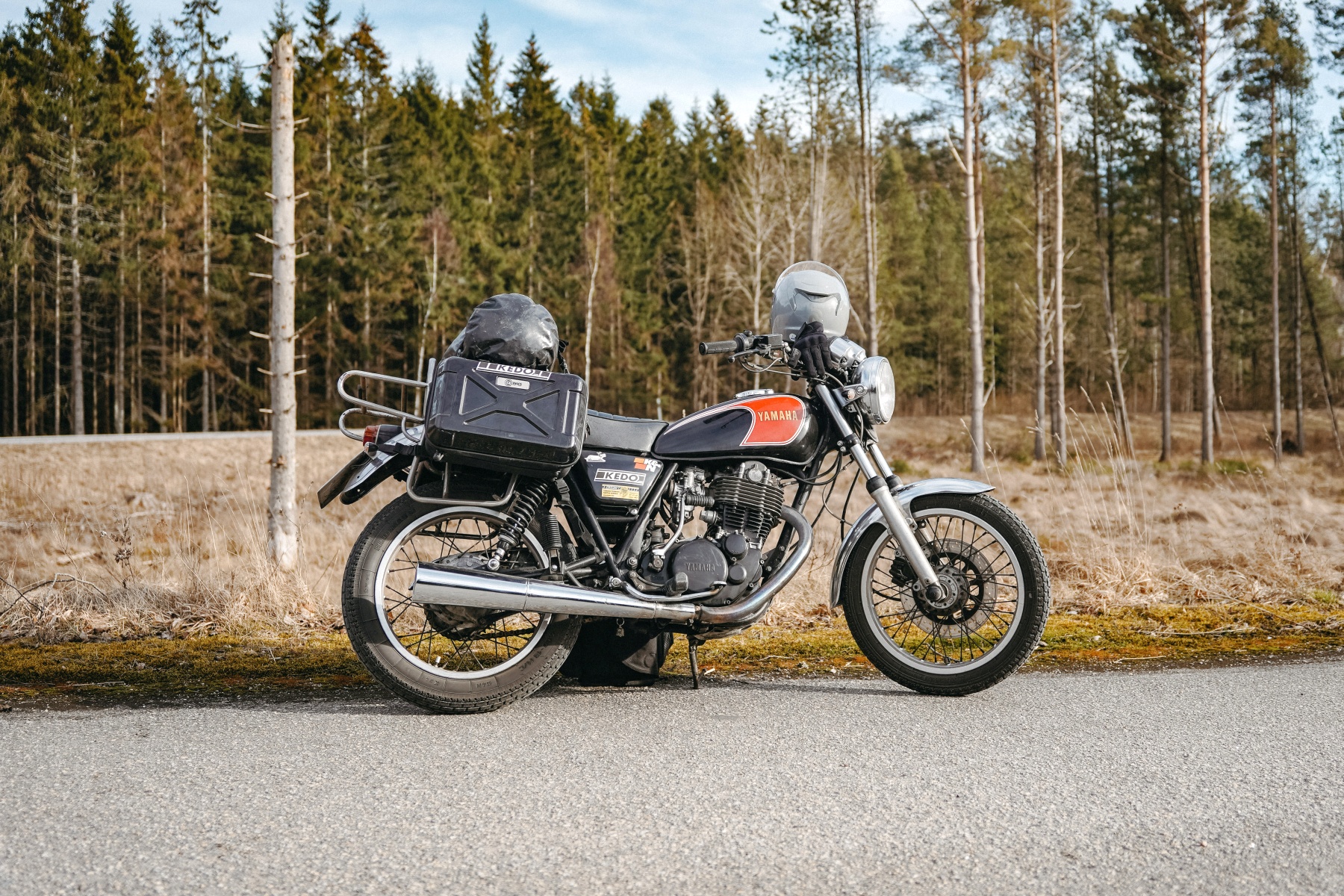
You have to do it: A classic road trip.
Off to the Scandinavian countries while it's still fresh in the new year. Even as a student, you can't travel whenever you want and it should be something special - a little adventure on two wheels. Anyone can do it at 20 degrees. The right clothes make it possible.
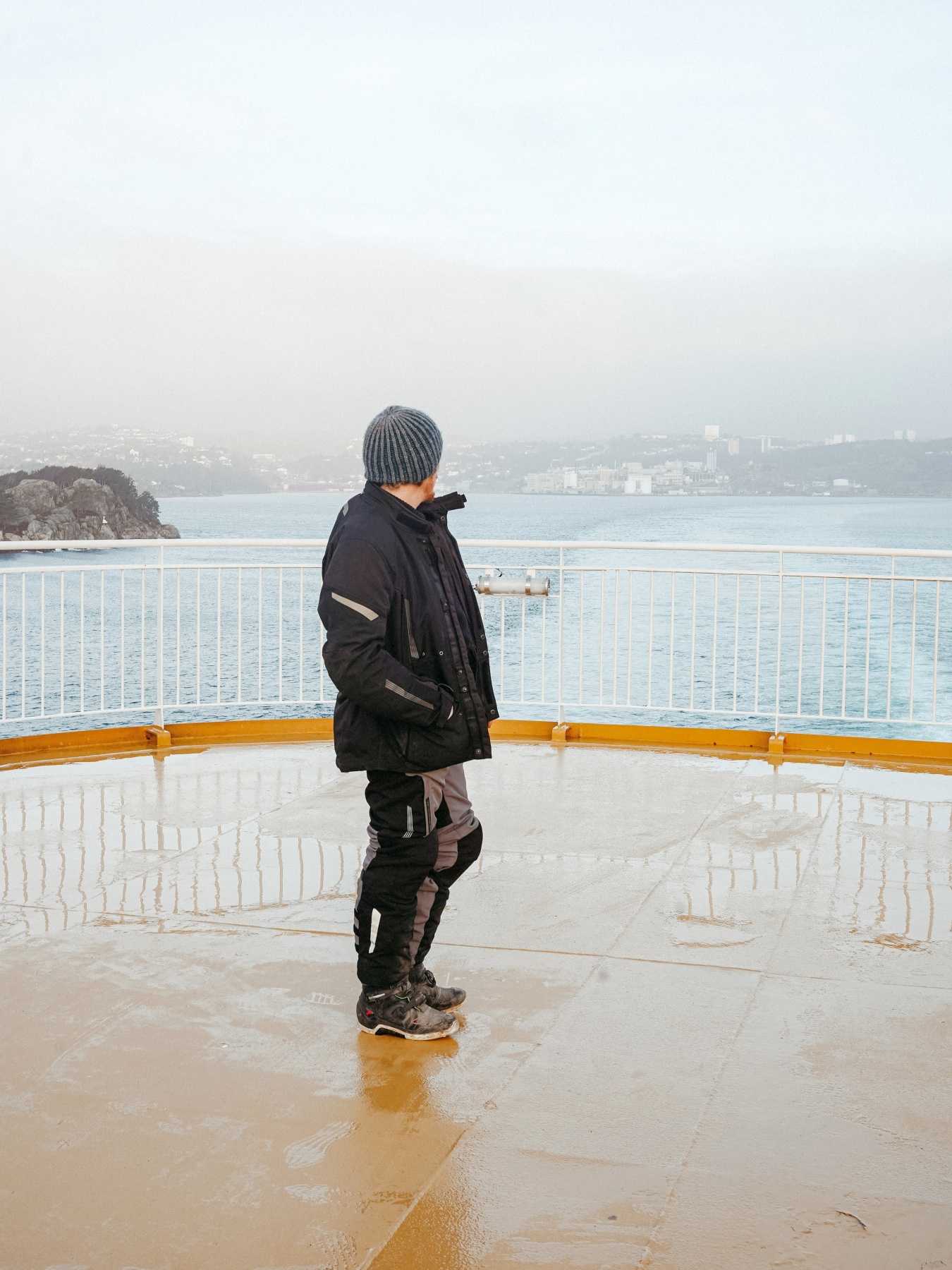
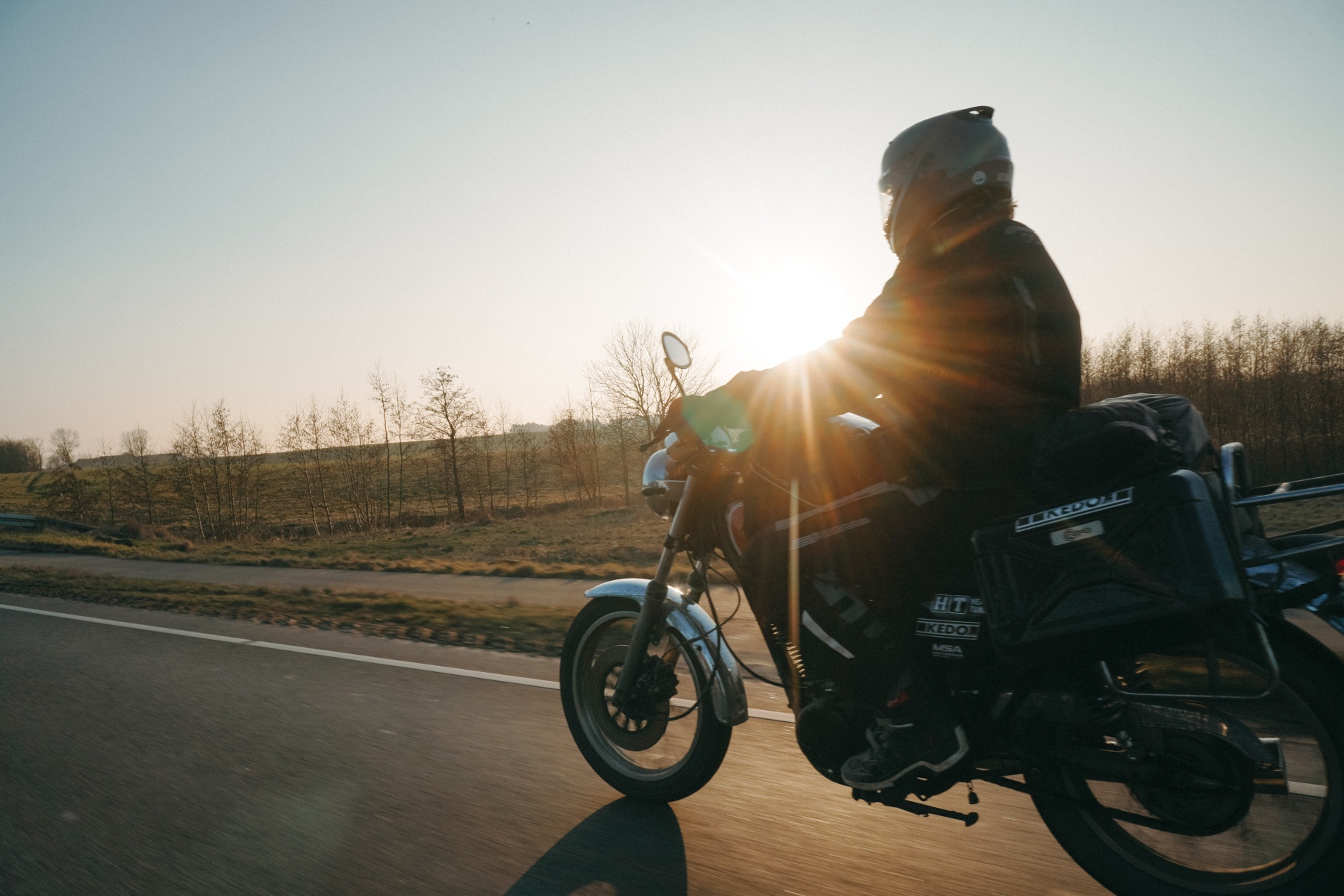
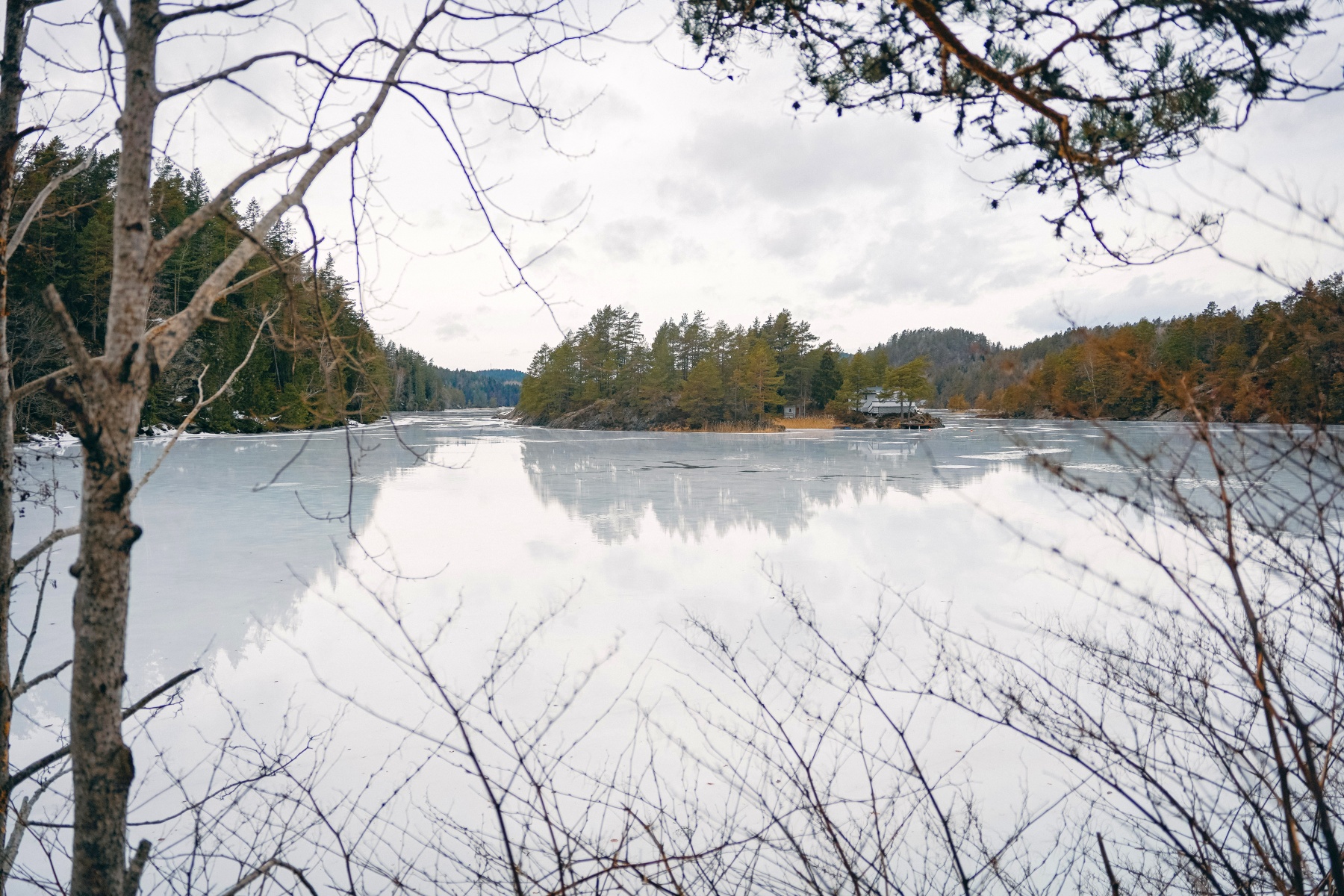
Simply silence. It was worth every minute of preparation and every meter of the journey.
Student and on the move. A wrench always at hand. What's going on?
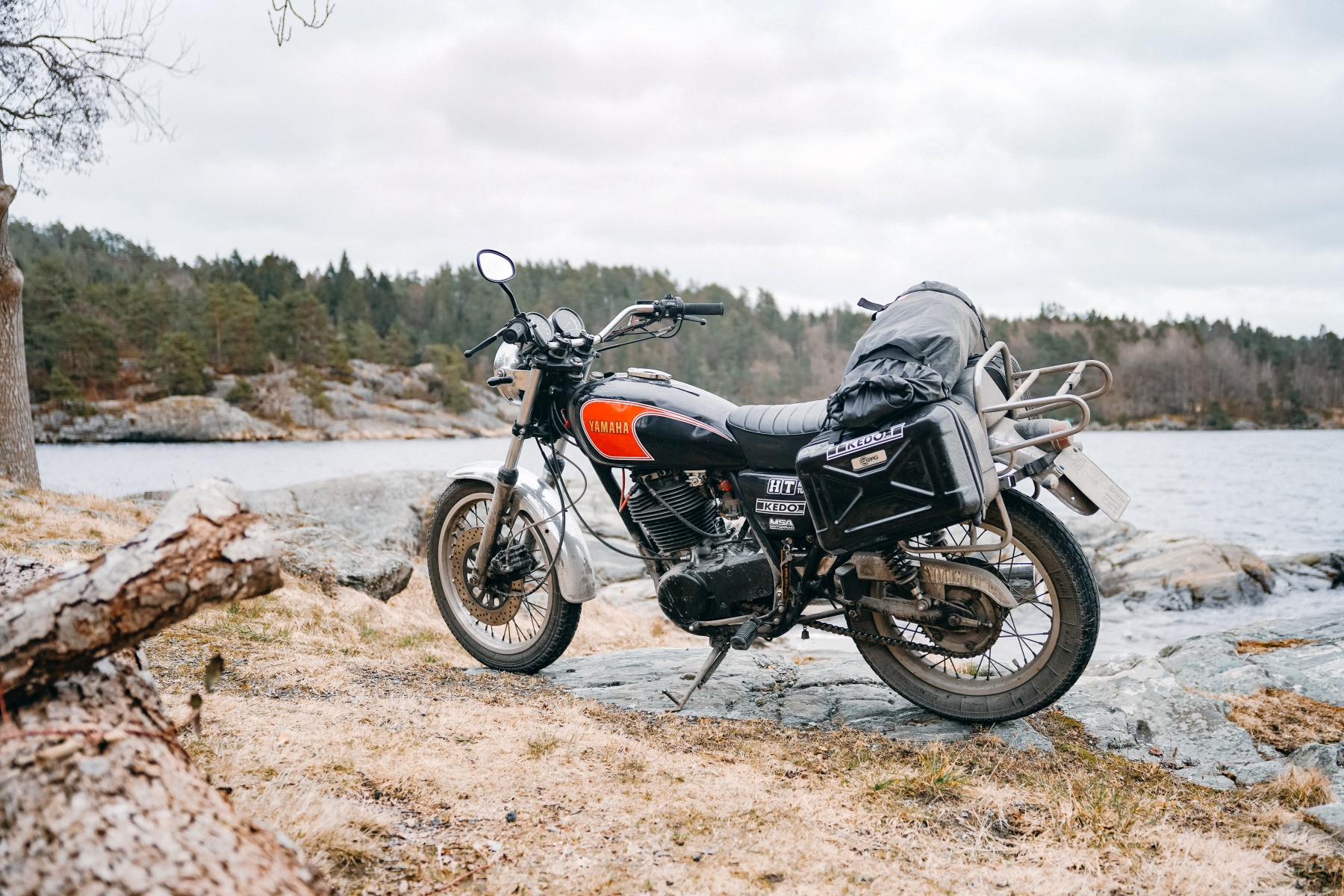
Markus:
Frederik Nelson Fuhrmann - Thank you for sharing your story with us.
We already know you from some cool events like the Scrambler Fever in Poland or the Classic Offroad Festival in Wietstock. Tell us about yourself.
Freddy: Yes, that's true. I'm mainly off-road and only ride two-strokes. With my Yamaha DT250 MX from 1978 and a Bultaco Frontera 370 from 1976, I like to take part in many an event. Mostly at Classic Enduro competitions or the aforementioned Scrambler Fever. So far, I've also found it difficult to get away from it and have only very rarely been on the road.
The desire for an SR500 arose last year, partly or primarily to change this. I wanted to be able to sit on a motorcycle and ride off without the maintenance intervals and relatively extensive care of off-road sports bikes. No matter whether it's everyday routes, rides or trips.
Of course, I'm still active off-road and we'll definitely see each other in the dirt again in the future. I love the freedom you have on the racetrack and the company and friends far too much for that.
What do you enjoy about the simple SR500?
Freddy: For me, the SR is the motorcycle when it comes to combining reliability, pure technology and style. It was not built from 1978 to 1999 with an almost unchanged engine for nothing. After that, the SR was still available as a 400cc, but fuel injection and exhaust gas purification brought additional details and a loss of performance. The simplicity was over.
The SR500 from the years up to 1999 impresses with its simple design and classic appearance.
There are no unnecessary bells and whistles, you get from A to B and still have time to take in your surroundings while driving.
The SR is nothing more and nothing less than a simple motorcycle. A "bread and butter moped" is what they would have called it in the past, and that's exactly what makes it so appealing to me.
"It is simple, but beautiful. Not fast and not slow. Reliable and relatively easy to maintain."
What do you do in real life and how did you get into motorcycles?
Freddy:
I'm now studying mechanical engineering in my penultimate semester and work on my motorcycles in my spare time.
After graduating from high school, I moved to Hamburg in 2015 to study music, more specifically: drums.
I've always been interested in technology, which is why I bought a Golf 2 to restore. My first car.
When the project was finished, I wanted something more practical for the city. That's how I ended up with a Simson S50 N in 2017. Very dilapidated, of course. Fascinated by the technology, I spent more and more time at Motorrad Selbsthilfe Altona, which still existed at the time, and got the Simson back on the road. The company is now called "Motorrad Service Altona". A pure service provider - open to all brands - without the possibility of self-help but highly recommended.
The private mechanic's workshop soon led to a temporary job at MSA and later my apprenticeship as a two-wheel mechatronics technician specializing in motorcycle technology.
The desire for more power and a real motorcycle quickly arose. So: driving school, buy a motorcycle, ride off.
I happily rode the first few kilometers on my Honda NTV until - one day before my first planned motorcycle trip to Lake Constance - I was picked up by a BMW driver on the phone.
The pictures have Martin Hass made.
The accident was not medically dramatic for me, but the dream of traveling further distances on my motorcycle was over for the time being.
A stroke of luck: at least that's how I got my first Yamaha. The FZR 600 3HE I bought for 200 euros ran, was fun and got me to work, but riding it long distances was unthinkable.
Through my training in Altona and the close contact with the suspension specialist "DS-Suspension", I had the opportunity to get to know motorcycle racing on asphalt and off-road. This motivated me to focus on motocross and off-road sports.
After completing my apprenticeship and gaining some work experience, I was drawn further and further into the theory behind engines, chassis and machines, so despite my rather modest A-levels, I applied to study mechanical engineering. That worked out, and during my studies I continued to enjoy working as a student trainee mechanic in Hamburg or in my new home on the Baltic Sea.
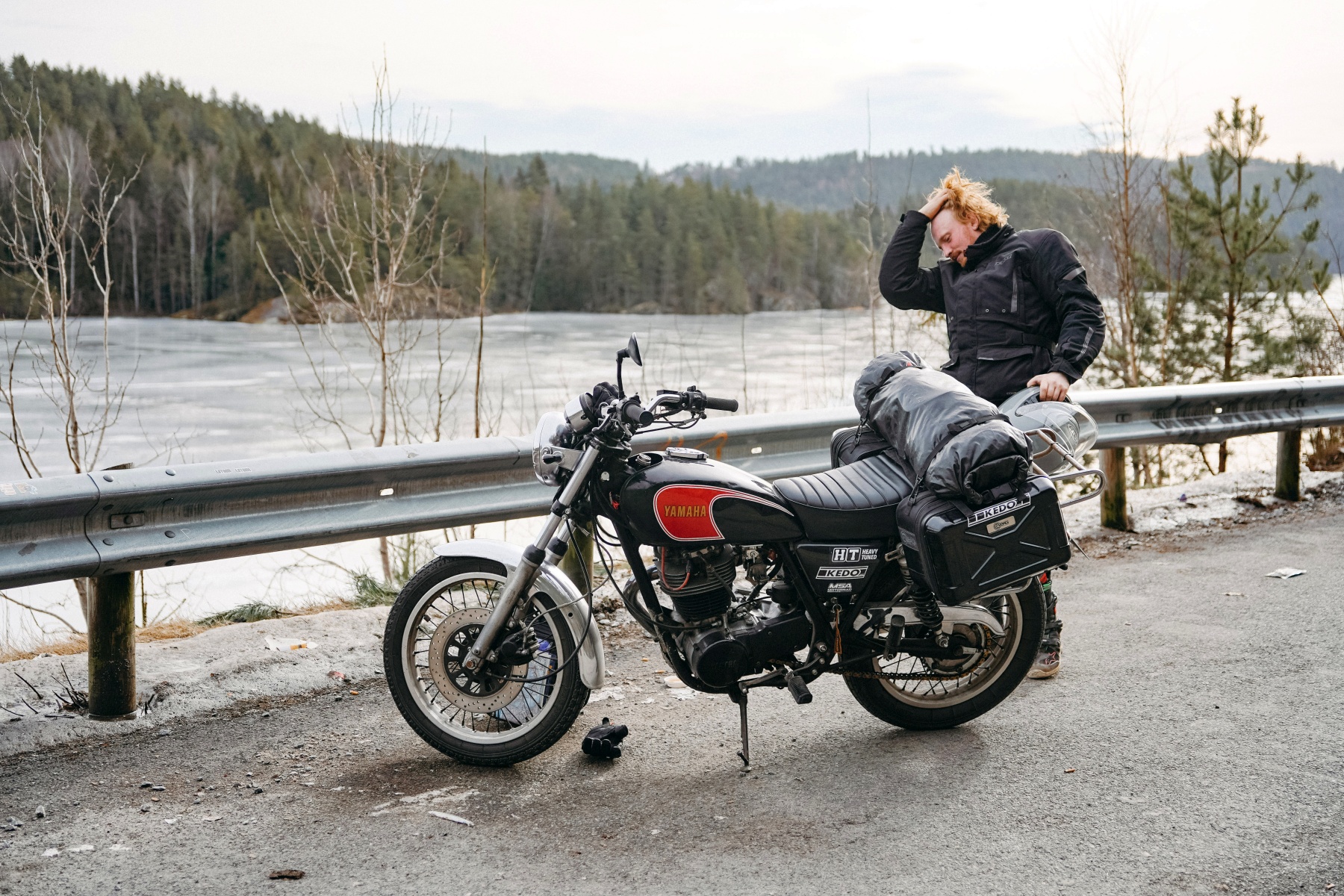
Why are you so keen on classic motorcycles as a young person?
Freddy:
If my friends were to answer that, the answer would probably be that I was born in the wrong decade. In terms of lifestyle, music and technology, I find myself more in the 70s and 80s of the last century. The feeling of longing when you watch the movie "On Any Sunday" for the hundredth time. The smell when the air-cooled engine underneath you reaches operating temperature.
Especially when it comes to technology, I find the attitude towards my own motorcycle and car at that time very desirable. The opportunity to work on your own vehicle and not stare at plastic. Manuals that explained simple maintenance tasks to the owner, including valve clearance checks.
Sure, not everything was great back then and it was necessary to wrench on your own vehicle, but I like the idea of helping yourself first before going to a garage.
The old mopeds tell a story and have character. Whether it is the relevance of the model for the subsequent developments of the respective manufacturer or the vehicle-specific history.
My SR comes from Costa Rica, for example!
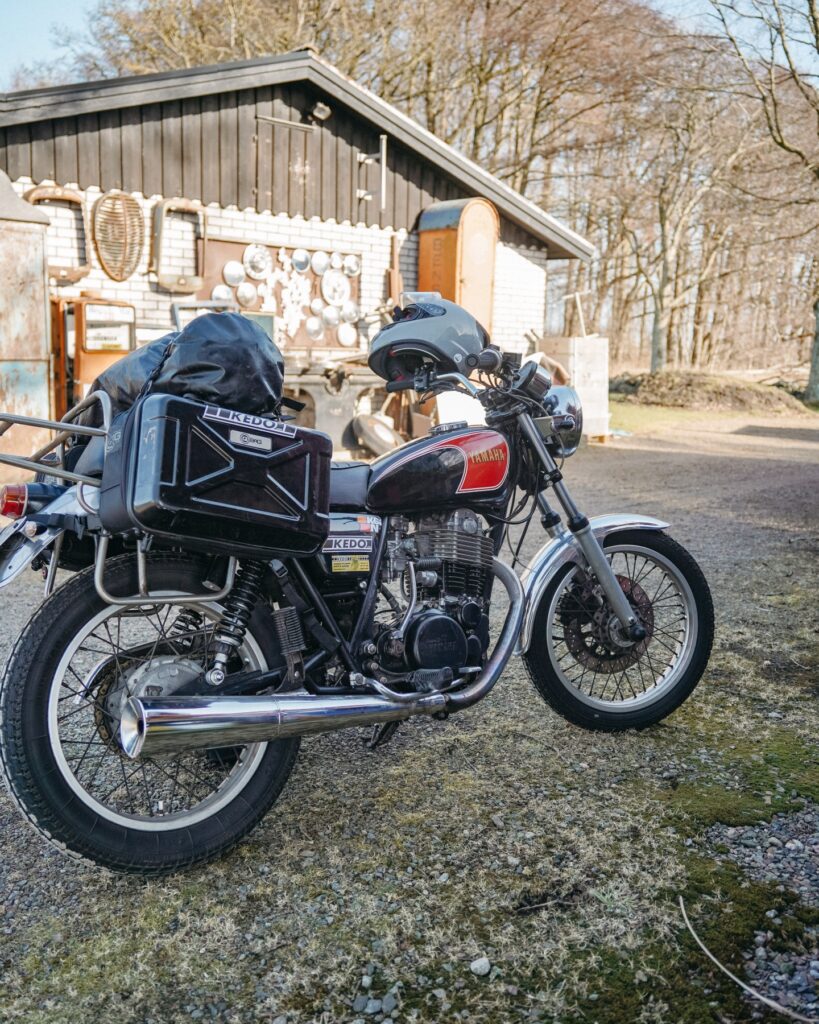
What advice would you give to people who are also interested in an SR500? What should you look out for when buying a used bike?
Freddy:
You should know what you want. It should be clear that an SR500 does not offer the comfort of a brand-new MT07 or Ténéré. You should also be aware that the SR500 requires the owner to be interested in how it works. For this very reason, I would advise anyone who wants to start understanding motorcycles to buy an SR. The wealth of information on the Yamaha 500 models is inexhaustible. Videos, books, forums and regulars' groups can be found after a quick search and if something breaks, there are almost all spare parts and optimization options available.
What I have just said leads on to buying used. The market for used SRs is large compared to other types of vehicle, and there are a lot of DIY shops. This also results in
the pricing. Finding an SR500 built between 1978-80 from first ownership with low mileage at a reasonable price today is like winning the Sunday draw with a super number. However, a well-maintained "tub" can be found at entry-level prices. If you're prepared to do some work yourself, you'll have a solid moped in your cellar or garage with a little time.
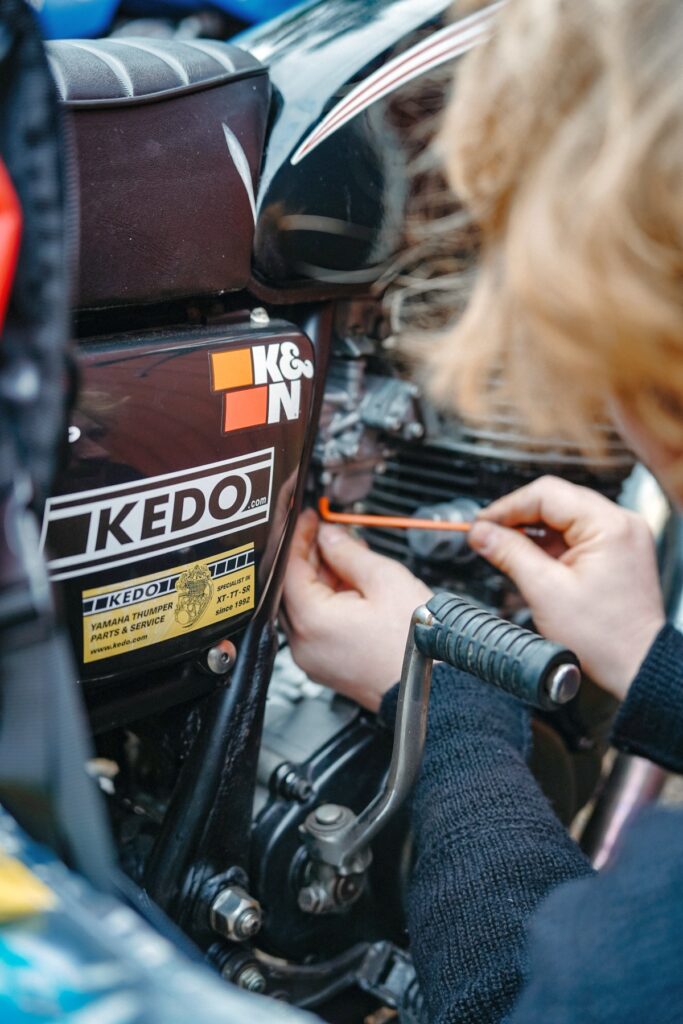
In summary, you should be prepared to screw or have screws screwed. A basic technical understanding is an advantage. During the inspection, check the compression using the kickstarter and listen to the exhaust silencer. If it hisses, the exhaust valve is crooked or there is oil carbon on it. Both can be remedied, but you have to want to. If the motorcycle is ready to ride, check the charging voltage with a multimeter if possible. Otherwise, the procedure is not much different from buying other motorcycles.
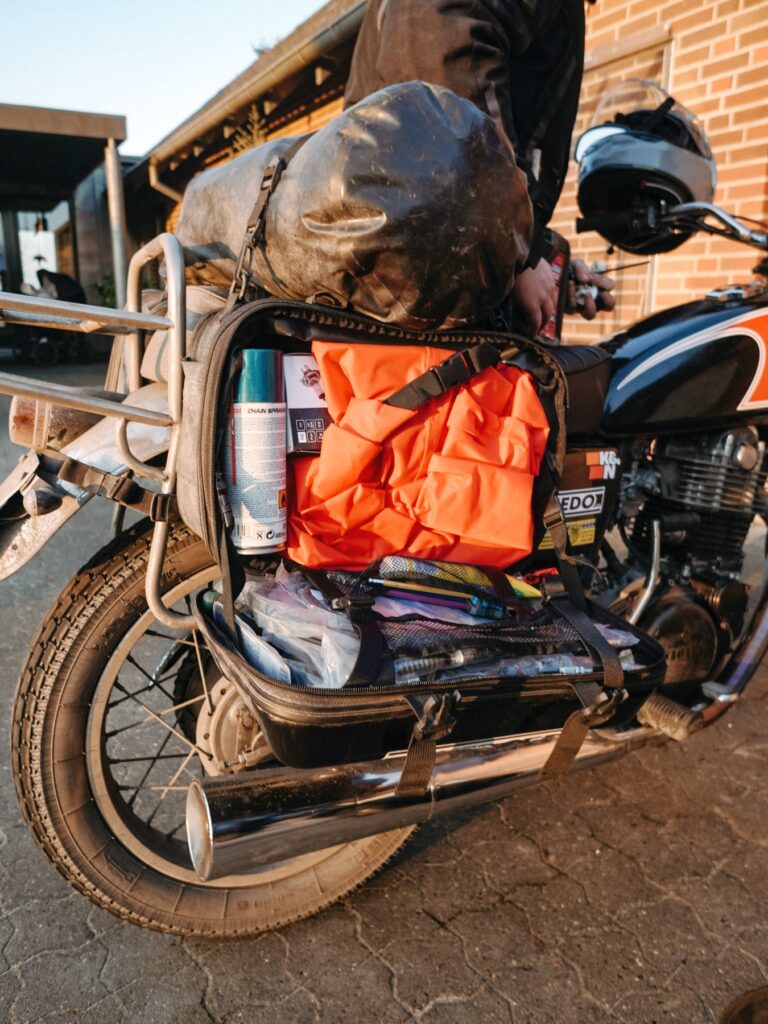
Once it's home and running, it's time to practise kicking it with the necessary resilience if it doesn't work first time. How often have I had to watch from the workshop window as SR and XT riders despaired of getting their bike started. It's not just the rider who suffers from this, but above all the engine, which painfully reports back if the starting device is used incorrectly.
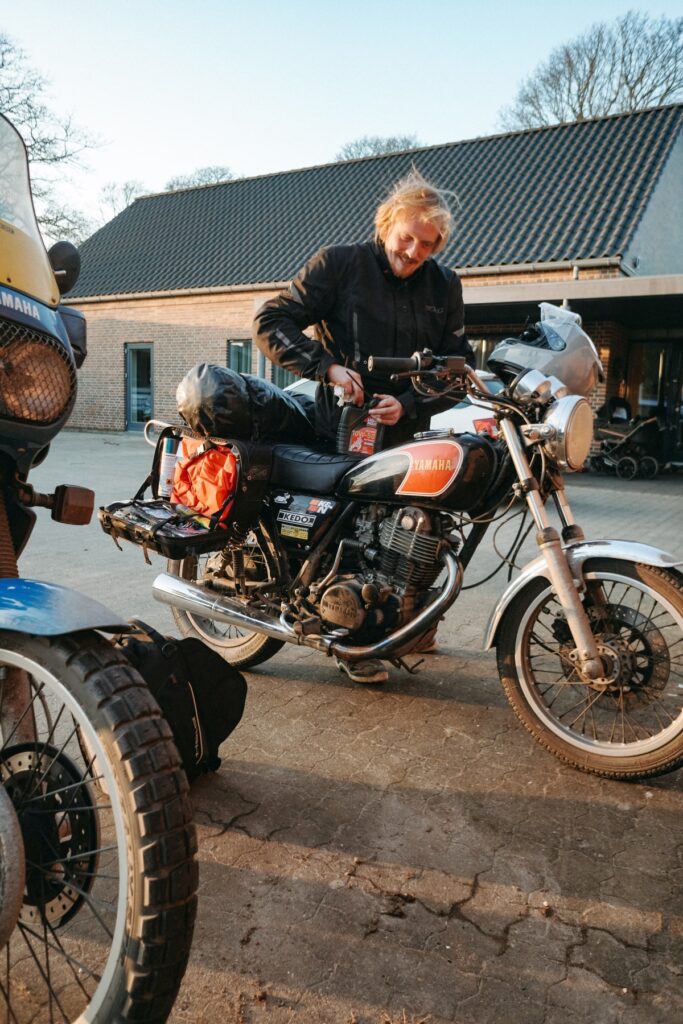
How deep do you go into the technology yourself?
Freddy: Thanks to my training as a motorcycle mechatronics technician, I do everything myself, from changing tires to repairing gearboxes. I only outsource the drilling and honing of cylinders and the pressing of crankshafts to a very nice workshop nearby.
Painting is not exactly my strong point either. But my mopeds are nicer with patina anyway.
Why was it important for you to travel north with one leg in winter?
Freddy:
Scandinavia was, or still is, a region that is empty and cool at its most beautiful. Martin and I saw virtually no other motorcyclists on our way through Sweden and Norway, the roads were empty apart from a few cars and there were no trucks either.
Riding a motorcycle along winding roads past a quiet lake where an ice fisherman is looking for a fishing spot or at dusk past brightly lit ski slopes was a very special feeling.
I probably also wanted to prove to myself that you can ride a motorcycle: 1. far, 2. when it's not 20 degrees and 3. doesn't immediately crumble into rust when the roads are a bit salty. Yes, as a mechanic you might get a bit weird.
But it worked and the landscape with snow and frozen streams was impressive! And so was the 2400 kilometers without a breakdown.
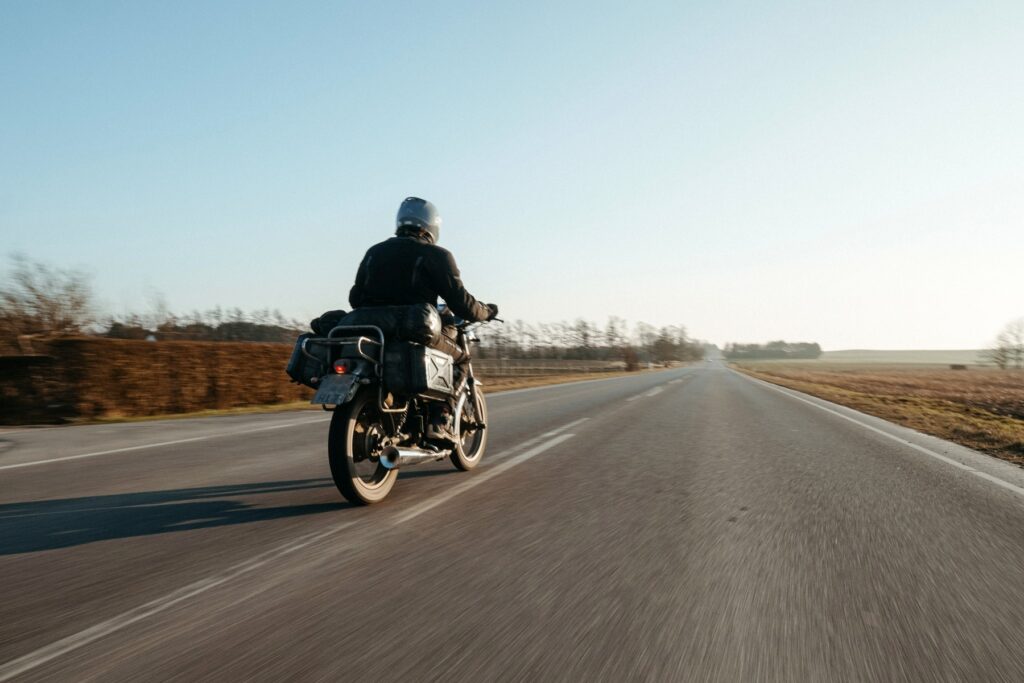
How much do you trust the SR500 to be reliable enough for a trip? How did you prepare man and machine?
Freddy:
I chose the SR partly because of my experience with this type of engine. The bottom line is that the engine is so simple that you can fix almost anything at the roadside. It can be removed in a few simple steps and you can get to every component. This ease of maintenance and my knowledge that these engines still run somehow, even with a minimum of compression, gave me a peace of mind with which I was almost carefree on the road.
Although I knew that the engine had already clocked up a few kilometers, I hardly replaced anything technically. However, I did replace wearing parts such as the kickstarter stop and checked the bearings for excessive play. The installed dry air filter was replaced with an oiled TwinAir foam air filter.
Of course, we also got fresh engine oil first.
I took a few extras with me just in case:
- A hose
- A rim tape
- All trains
- Spark plug
- Lots of tools
- Chain grease
- Feeler gauges
For my comfort, I also installed a grip heater and bought thermal textile motorcycle clothing and thermal underwear. Probably quite normal for experienced travelers. I was blown away by the efficiency of these modern clothes. It really makes sense.
To prepare and test the bike, however, I was often out and about in February in temperatures between -2 and 2 degrees.
What was your most exciting tour and which one would you ride in the future?
Freddy: As the trip to Scandinavia was my first real motorcycle trip, it was the most exciting tour so far. Apart from racing events in France or other places where I explored a bit of the area off the beaten track on my motorcycle.
In the future, I'd like to head south with the SR! But after our route change due to ice and snow, we also have a trip to more northerly Scandinavia on the agenda.
A dream would be to have plenty of time for a tour via Norway, Sweden, Finland, Estonia, Latvia and Lithuania.
With the SR, of course.
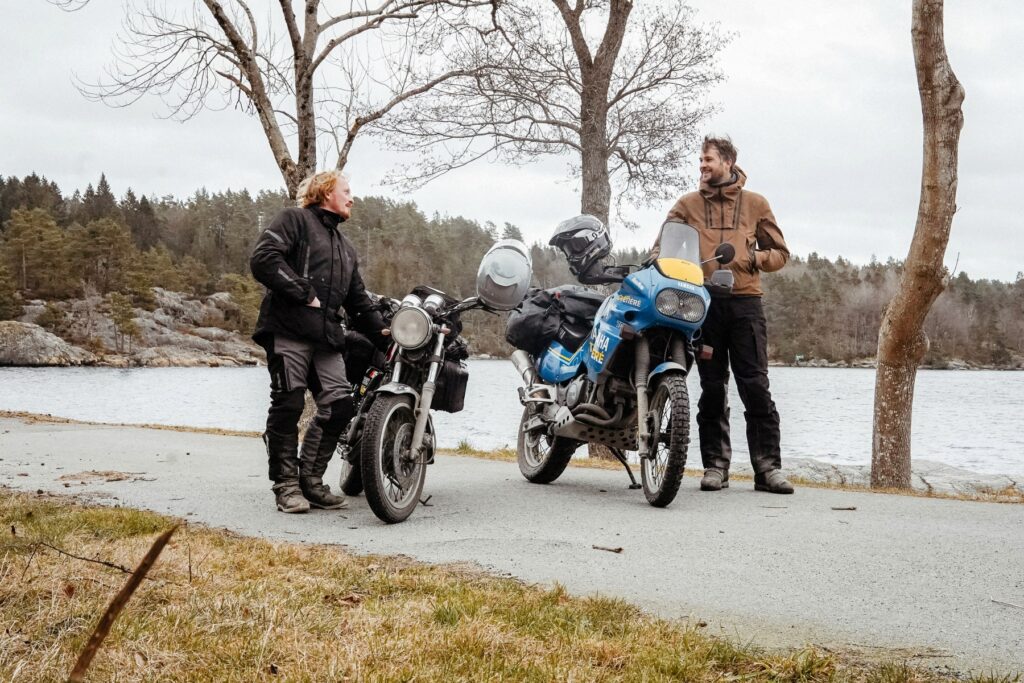
What has made the SR500 a cult motorcycle can also be seen at our friends from nippon-classic.com read more. The history of our favorite stew pot is very well recorded here.
Its simple design, versatility and timeless appearance have made the SR500 immortal. No engine has ever been so well documented. Every problem has been solved. Swarm knowledge as in the Bucheli projectis a huge help for all beginners and old hands alike.
The spare parts supply is really excellent compared to other youngtimers. Not least because of the good used parts market and of course: KEDO.com
Our webshop is the No.1 source for every SR restoration. We are constantly on the hunt for the necessary spare parts, useful accessories and also offer in-depth service for carburetors, engines and chassis in our workshop. Questions? Problems? Give us a call, write to us at info@kedo.de
Take the plunge. Save an SR500 or XT500 and just drive off.
WHY ALL THIS?
If you're looking for inspiration on the subject of "just get going", we'd like to recommend some classics that turned some of us into compulsive motorcycle enthusiasts decades ago:
The documentary "On any Sunday" by Bruce Brown from 1971 and the book "Jupiter's Ride" by Ted Simon, who circumnavigated the globe on a motorcycle in the early seventies. Also and particularly inspiring: "Lone Rider: The First British Woman to Motorcycle Around the World" by British motorcycle traveler Elspeth Beard.
There is a lot of philosophy in life on a motorcycle.
